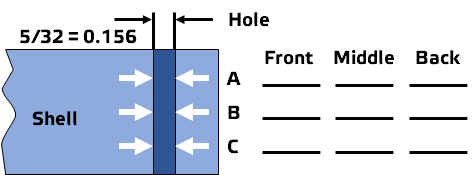Wet streak caused by corrosion of roll shell, case study
Apr 14, 2020
Though speeding past at 3000 fpm, the wet streak running directly down the center of the sheet was hard to miss. Sometimes profile problems have a way of working themselves out. Not this time. The streak got worse, and within the hour the machine went down.
Profile problems on No. 5 weren’t an uncommon occurrence. The night shift operator just didn’t expect to see them so soon – the suction roll with its recently reground cover had just been installed that afternoon.
The mill’s maintenance technician sounded the cover, hearing a hollow bang. He suspected the center of the cover is loose. That might be expected of an older roll cover or one with signs of damage, but not a recently reground roll. What could have caused the failure?
Roll shop removes the cover
The mill sent the roll to its roll cover and repair specialist. Typically, when a suction roll cover fails, there is visible impact damage or a loose end. But this roll was peculiar because both ends were bonded and had good adhesion. Instead, the center, from quarter point to quarter point, was loose.
The roll was put in a lathe to remove the cover. During the removal, the roll specialist noticed that the shell was moving. He discovered a circumferential crack just past the center on the back side of the shell. What could have caused it to crack?
Metallurgist inspects the roll

Suction roll shell hole inspection
For the answer, the roll specialist called in an OEM metallurgist to conduct a mechanical inspection. The results showed the holes in the cracked area had eroded to .186 inches from their original .156 dimension. The most severe erosion occurred about every 17 inches along the length of the shell.
Maintenance history and mill mechanic provide the key
The roll specialist also reviewed the mill’s maintenance history on the roll. Improper maintenance was ruled out - the roll had routine and scheduled repairs with no apparent problems. However, one of the mill’s mechanics did mention the mill had been having problems keeping the roll’s felts clean. As a result, it had been running felt cleaner through the suction roll fog showers.
This explanation corresponded with the usual corrosion pattern found on the shell. The fog showers within the suction roll were spaced every 17 inches. This was exactly where the corrosion was most severe and the chemical concentrate would have been the highest!
The culprit is identified
Instead of running the OEM-recommended clean-filtered water through the fog showers, the mill had been running concentrated cleaning solution – accelerating the corrosion process. This process had reduced the rating of the shell, causing it to crack under designed machine loading.
The roll specialist provided the mill with the OEM’s operating specifications for fog showers and suggested that suction rolls receive routine inspections and their shells be NDT tested.
The mill was fortunate in this case. Early detection of the problem prevented what could have been a major failure.
For more information on suction roll operations, maintenance and repair, contact your Valmet representative.